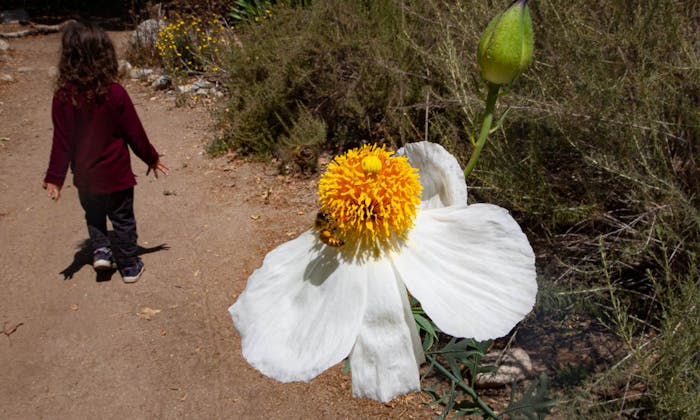Arlington Gardens is a 3-acre free, public park in Pasadena that can provide inspiration for a garden of any size
Arlington Garden is a lot of things, depending on which “room” you are standing in. It first caught my interest as a native demonstration garden. On my first time visiting, matilija poppies were blooming as were the wildflowers. Returning in mid-summer, these features were no longer in bloom, but the garden was still full of many delights all the same.
History
The story of Chicano Park in San Diego is a story of a neighborhood rising up against the forces of CalTrans to fight the splitting of their community by a massive freeway, and, ultimately, failing. That lost community, ultimately being commemorated in a park located under the 5 freeway. Oddly enough, when CalTrans attempted something similar in Pasadena, efforts to stop the freeway project were ultimately successful.
The 710 freeway project was abandoned, but CalTrans had been acquiring land for the project as far back as the 1950s. In one location, a 3-acre lot had been set up for staging equipment. It sat vacant for years before Pasadena decided to do something about it. They leased the land back from CalTrans, and in 2005, ground was broken on the lot for Arlington Gardens.
The Garden
Arlington Garden is like a tiny house project redone as a garden. The space is so efficiently utilized, it’s hard to believe the size of the whole park is only 3 acres. Think of it as Descanso Garden in miniature.
Each section is divided into “rooms” where they have little placards displaying what the rooms are. For example, there is the Coastal Sage Scrub room which features vernal pools and alluvial sage scrub. There is a wildflower section that is an official “Wildflowering LA” site (site #5). For these reasons, Arlington Garden is a home to many native pollinators and has caught the attention of local artist and bee enthusiast Krystle Hickman (@beesip).
My passion is the native plants, but I also appreciate what they have done with the Meditteranean gardens. These were inspired by the book, Sun-Drenched Gardens: The Mediterranean Style, by Jan Smithen. Along the north-western edges of the garden are cultivated succulents, shaped to create a space much like a forest would create.
Ecology
Arlington Garden's plant selection follows the concept of "climate appropriate," so even though they have an extensive native garden, there are also a lot of non-native trees, shrubs and succulents. Many parts of the garden are inspired by mediterranean gardens.
They do not use pesticides, chemical fertilizers or herbicides. Whenever weeding is needing, instead of pulling weeds they add mulch. Some weeds, like sow thistle, are even allowed to stay since they are not considered a threat to the garden.
In addition to the many plants being shown off, there are demonstrations of different structures. Vernal pools are a rare feature that supports plants and animals that depend on seasonal ponds, such as fairy shrimp and specialized grasses. Los Angeles has lost 99% of its natural vernal pools.
Arlington Gardens also features numerous types of benches and trellis's, a garden maze and fountains. Demonstration gardens such as this are a great way to come up with ideas for your own garden at home.
Visiting

